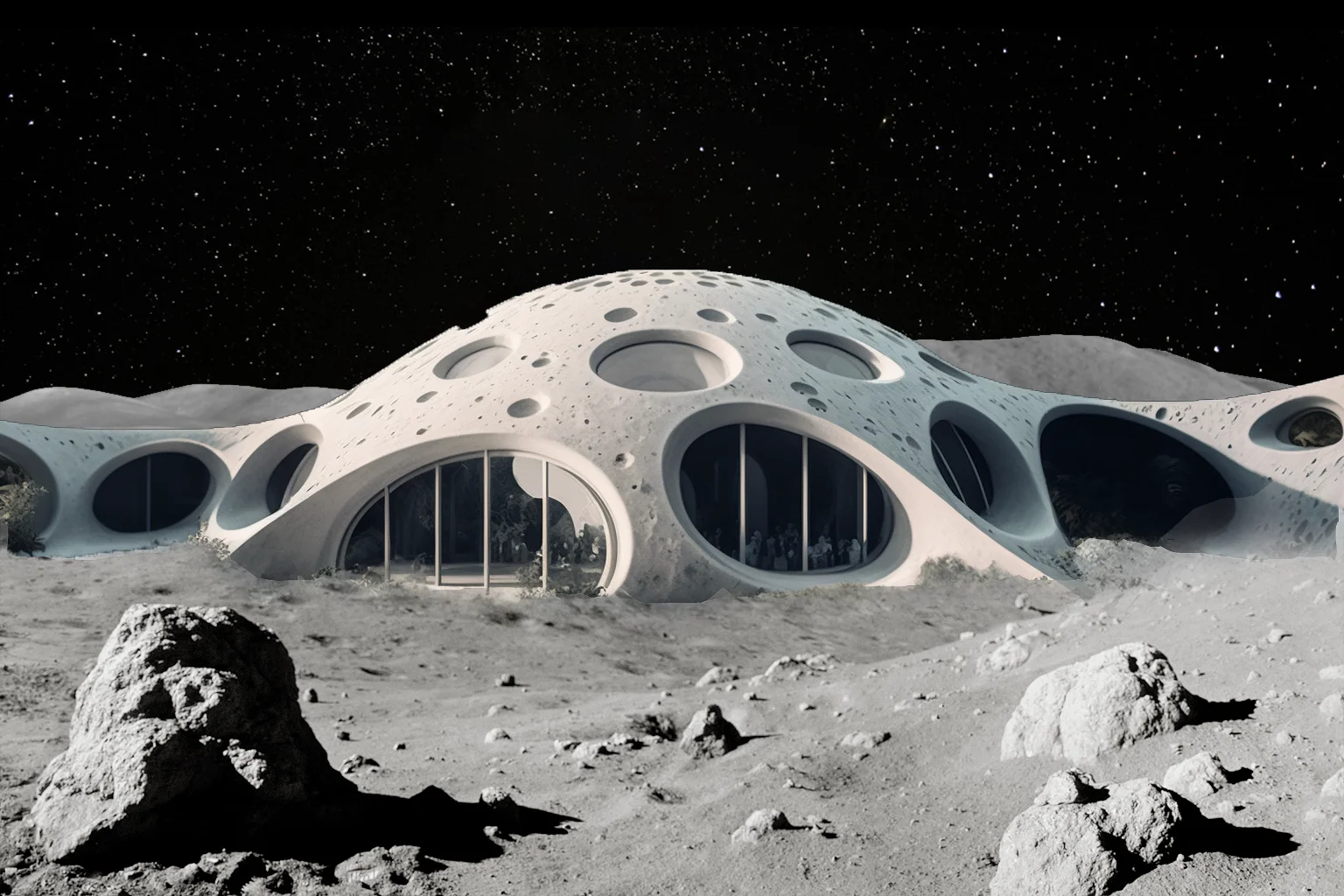
For Designing Spaces & Environments Using AI, we were to research and explore ideas of what to build in space, taking inspiration from the NASA's Artemis mission.
Muse is a place for people to be inspired by and honor the majesty of space, the moon, and all the accomplishments of the pioneers that got us to the moon. It seconds as a small reminder of home and our humanity. The exterior of this space is intended to be a monument built from lunarcrete that blends into the scenery around it, like a less personified and more universally culturally appealing Mount Rushmore.
Inside is intended to be a museum and botanic garden, climate and air controlled with a variety of plants carefully selected for survivability on the moon. Along the paths of the botanic garden will be relics of “firsts”; the first lunar rover, the first golf ball shot on the moon, and so on, for visitors to admire.
Blending into the moon itself, the Muse building will go a few floors deeper than first appears. Excavate to create lunarcrete material for the enclosure.
Inspiration
In Greek mythology, Zeus and Mnemosyne have 9 daughters, known as muses, who are accredited as being responsible for inspiring humans through art and science. Thus the word “Museum” refers to a sacred place where muses reside, an inspirational place to learn.
Though Artemis was technically not a muse, she continues to inspire us mortals to this day. It seems only fitting to create a memorial/museum that honors nature and our achievements on the moon. It’s what Artemis would have wanted!
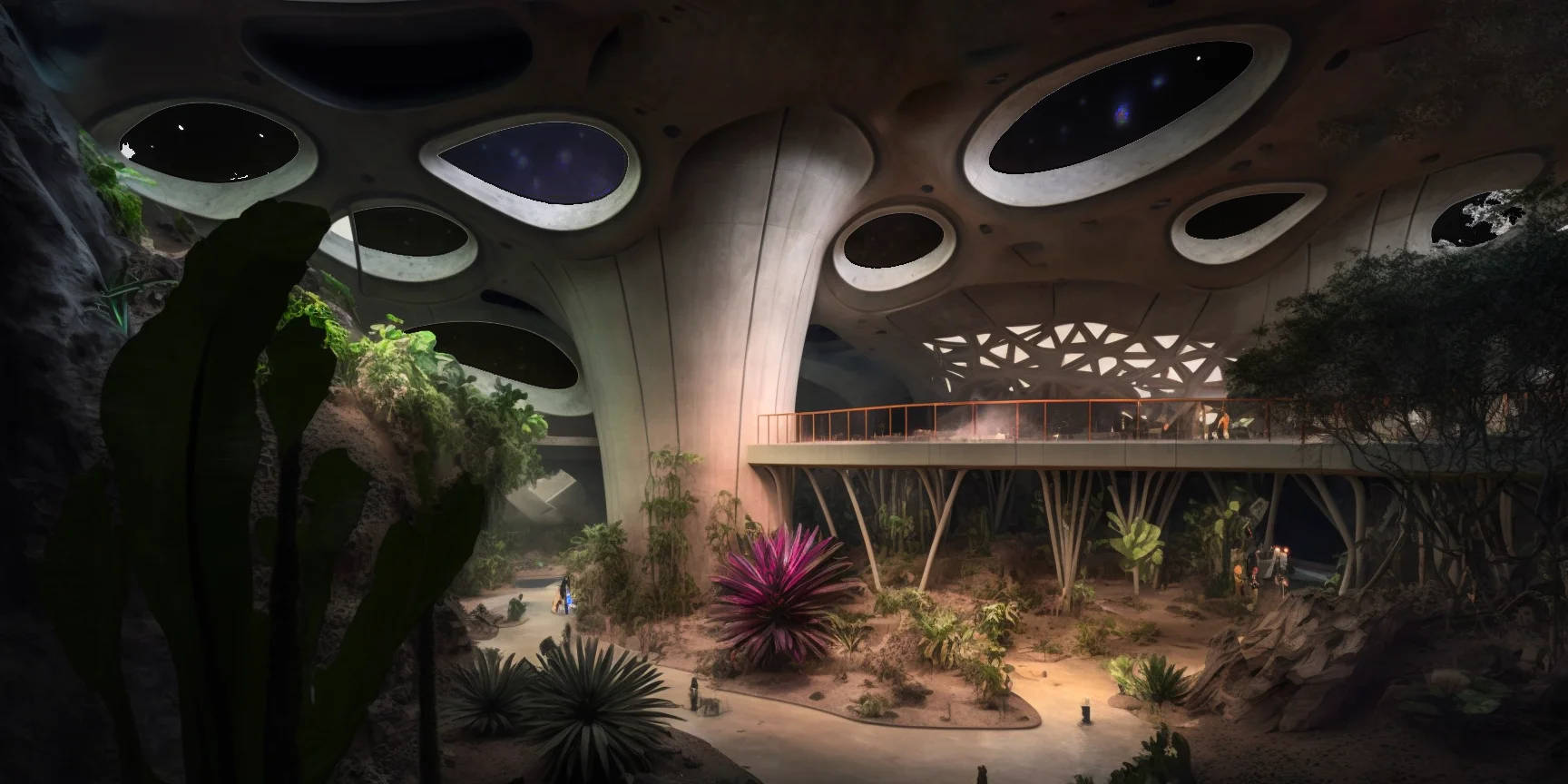
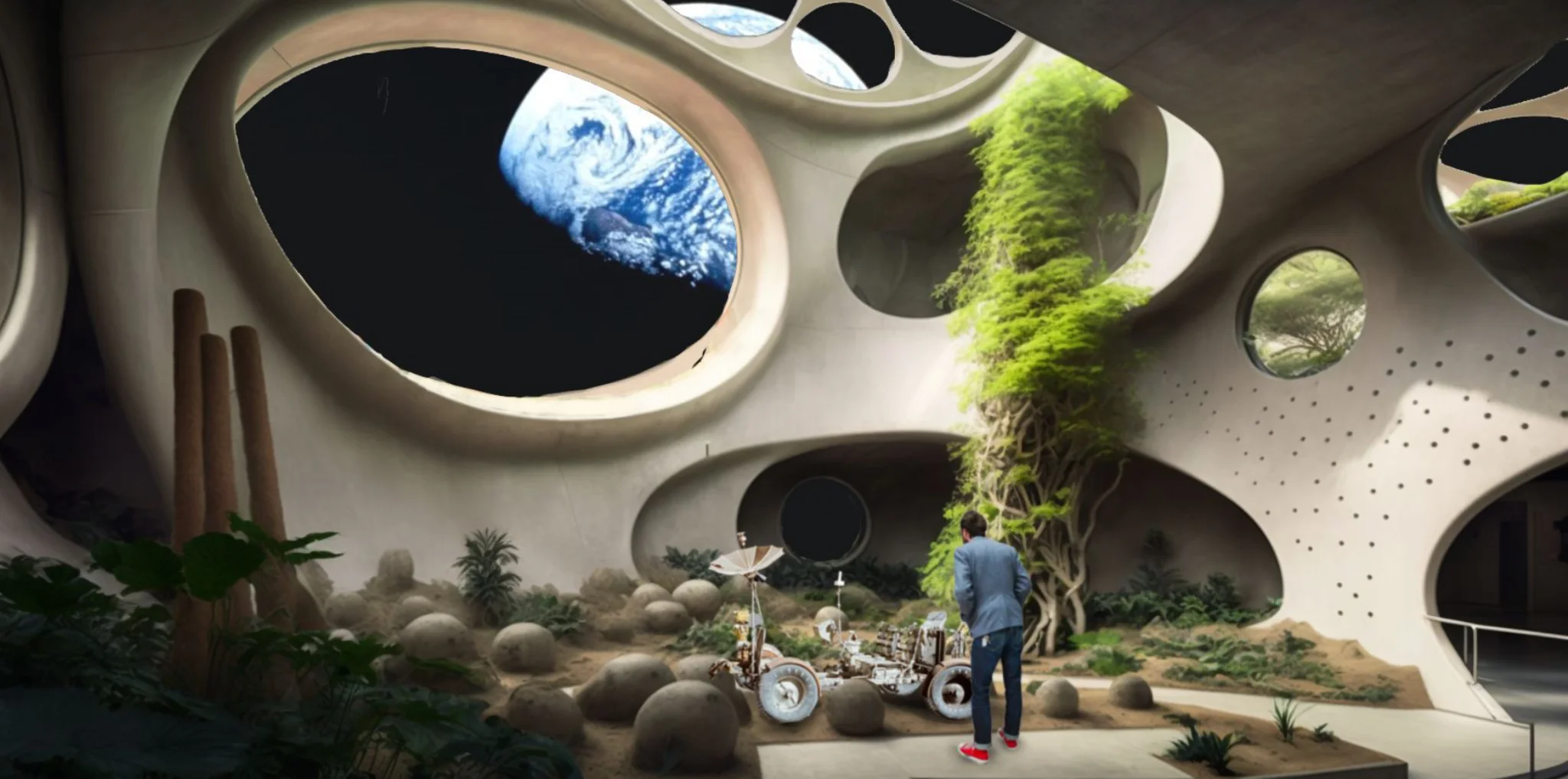
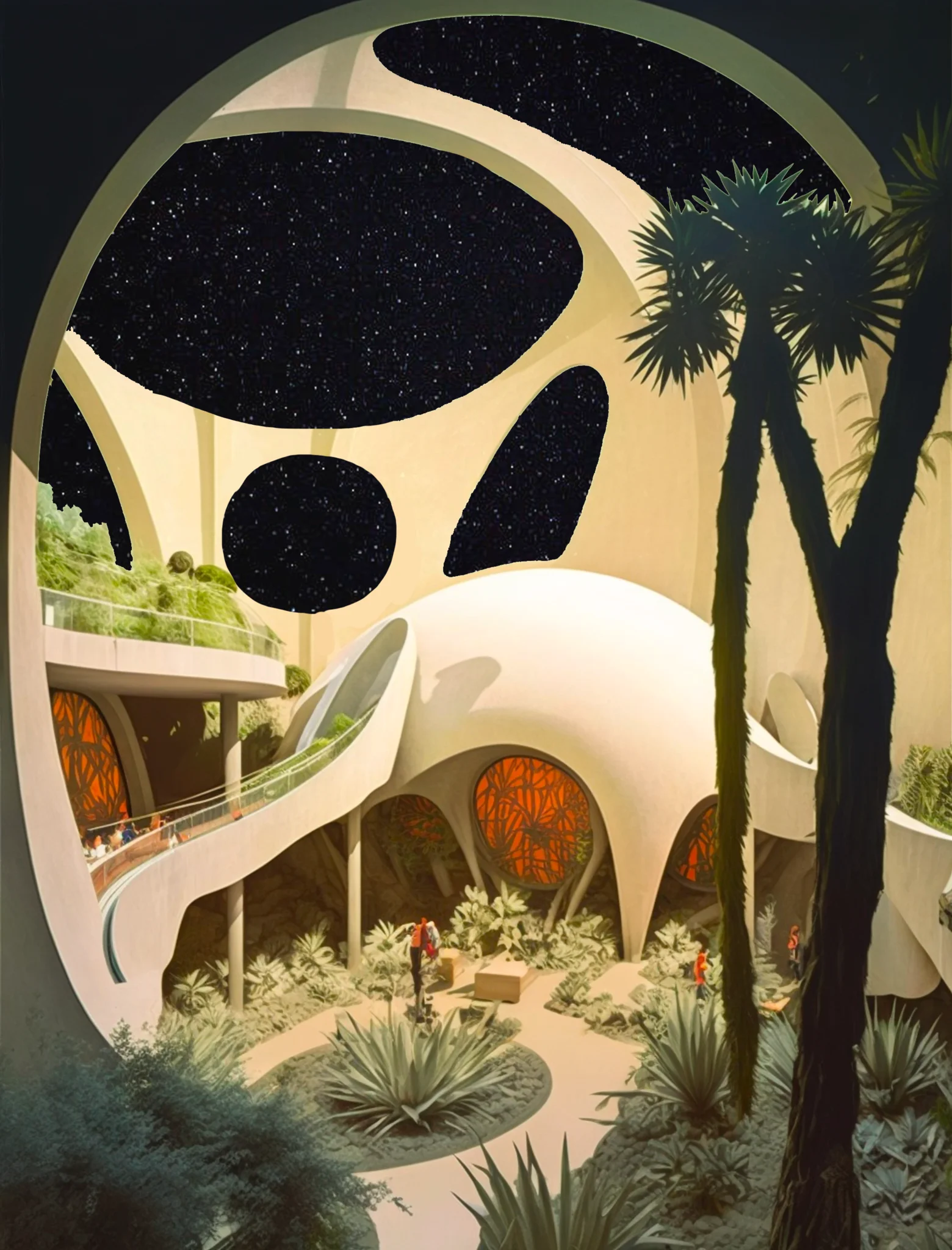
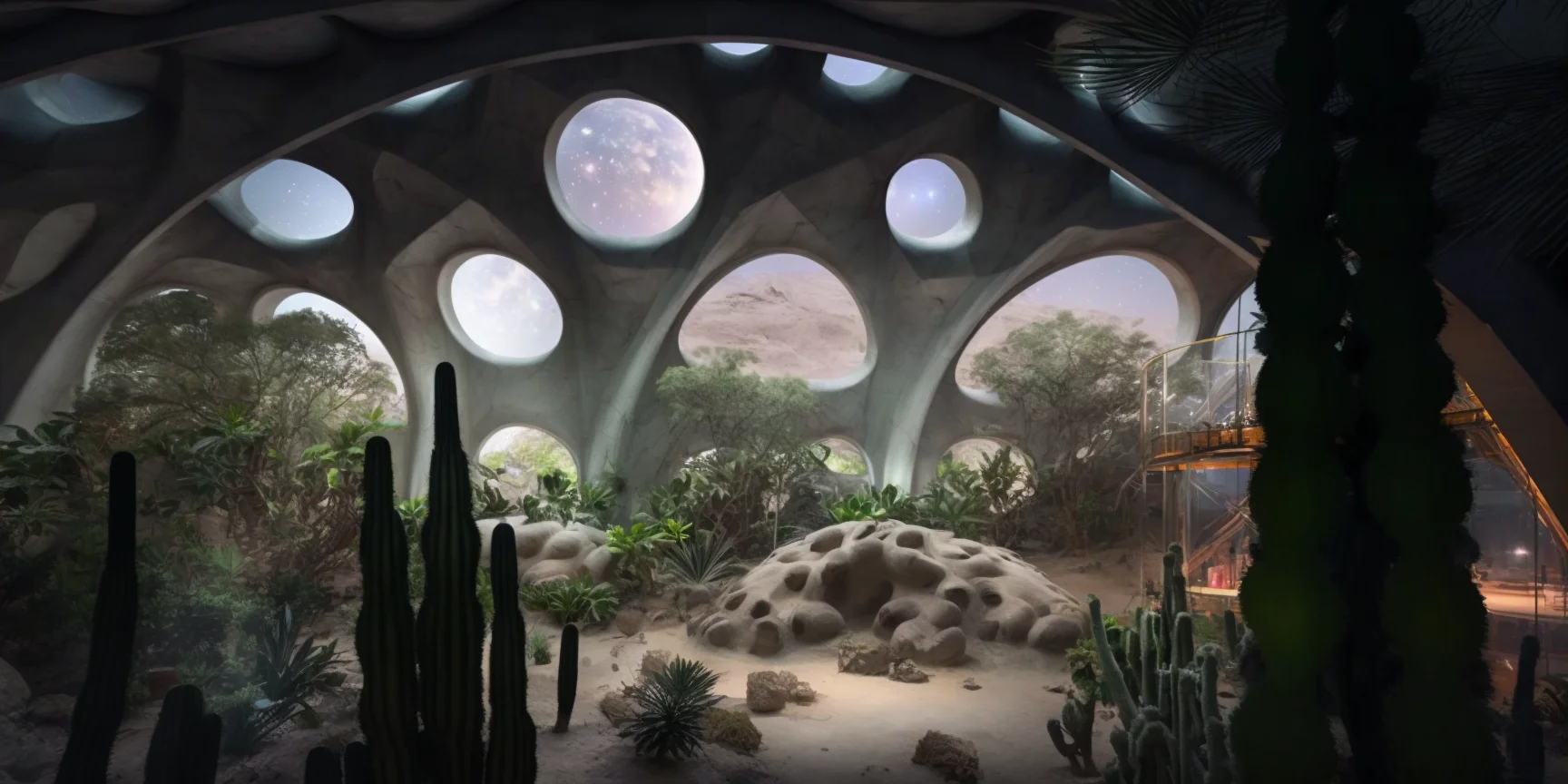
Future of A.I. in the Design Process
This class was run shortly after tools like Midjourney and DALL-E 2 became available to the public. Part of the intention was for the entire class of ~20 to work as a team in learning how to best use generative AI tooling to our advantage and examine what role it might play in creative processes in the future.
Each person in our class went through an extensive iterative process for a couple months in refining their ideas. We found AI to be especially helpful in helping us brainstorm ideas, but not specific enough to complete an idea. Most of the tooling we used served as a great point at which to jump off into our own sketches, 3D modeling, or to composite with other images in Photoshop.
You can see the result of a couple months of ideation by our entire class at our class website:
I myself did a lot of compositing for mine as many of the AI generated creations were either physically impossible or not what I was looking for. You can see some of the process of ideation below in my presentation deck (see the link for more context via the speaker notes).
Process
See the full presentation with speaker notes here, else see the PDF below!